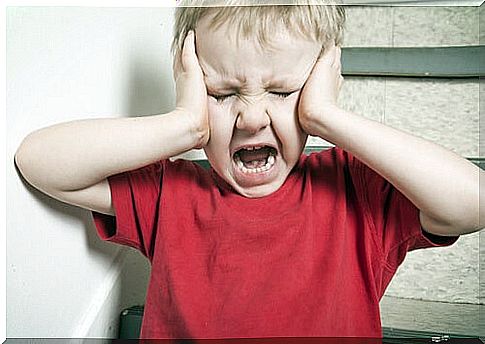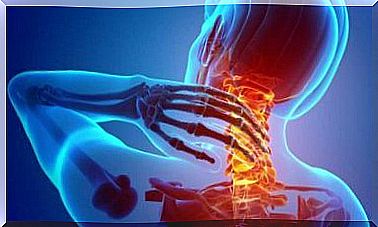Disruptive Mood Dysregulation Disorder

Disruptive mood dysregulation disorder is a disorder of recent appearance in the DSM-5 that is mainly characterized by the presence of chronic, severe and persistent irritability in some children.
Although these symptoms can appear in a wide variety of childhood psychological disorders and disorders such as ADHD or bipolar disorder, the creation of this new concept was founded with the aim of being able to include tantrums and certain outbursts of anger in the diagnosis.
In fact, some researchers consider severe non-episodic irritability in children a hallmark of bipolar disorder. Hence, during the last decades of the 20th century, it was discussed whether or not this behavior was a pediatric manifestation. Additionally, this coincided with a significant increase in bipolar disorder diagnosis rates in children.
This abrupt increase appeared to be due to clinicians combining at least two clinical manifestations into a single category. That is, both the classic episodic presentations of mania and the non-episodic presentations of severe irritability had been labeled as bipolar disorder in children.
Thus, in DSM-5 , the term bipolar disorder was explicitly reserved for episodic situations in which bipolar symptoms occur. The DSM-IV had no diagnosis intended to diagnose children whose distinctive symptoms consisted of very marked and non-punctual irritability.
In this way, DSM-5, with the inclusion of Disruptive Mood Dysregulation Disorder, has provided a different category for such problems. Let’s see what it consists of.

Irritability as a fundamental characteristic
As we said, chronic, severe and persistent irritability over time is the fundamental characteristic of this disorder and it has two relevant clinical manifestations:
- Frequent outbursts of anger.
- Persistently irritable or chronically angry mood between severe outbursts of anger.
It is important to note that the first diagnosis of Disruptive Mood Dysregulation Disorder should not be made before age 6 or after age 18. Therefore, we are facing a disorder that is not diagnosed in adults.
Frequent outbursts of anger
These attacks occur in response to frustration, and can be verbal or manifest through behaviors (aggressiveness against objects, oneself and other people).
It is not enough that they happen once in a while. They must occur three or more times a week, for at least one year, and in at least two different settings (for example, at home and at school). Furthermore, these outbursts of anger must also be inappropriate for the developmental level of the child or adolescent.
Persistently irritable or chronically angry mood
This irritable or angry mood must be characteristic of the child. Therefore, you must be present for most of the day, almost daily. In addition, it must be appreciated by other people around the child.
Disruptive Mood Dysregulation Disorder
The criteria indicated by the DSM-5 for the diagnosis of this disorder are the following:
A. Severe and recurrent outbursts of anger that manifest verbally and / or with behavior (eg, physical assault on people or property) whose intensity or duration is disproportionate to the situation or provocation.
B. The attacks of cholera do not agree with the degree of development.
C. Outbreaks of cholera occur, on average, three or more times a week.
D. The mood between fits of anger is persistently irritable or irascible most of the day, almost every day. It is observable by other people (eg, parents, teachers, peers).
E. The AD criteria have been present for 12 or more months. In all this time, the individual has not had a period lasting three or more consecutive months without all the symptoms of the AD criteria.
F. Criteria A and D are present in at least two out of three contexts (at home, at school, with peers) and are severe in at least one of them.
G. The first diagnosis should not be made before the age of 6 or after the age of 18.
H. From history or observation, AE criteria begin before age 10.
I. There has never been a well-defined period of more than one day during which all symptomatic criteria, except duration, for a manic or hypomanic episode have been met.
J. The behaviors do not occur exclusively during an episode of major depressive disorder and are not better explained by another mental disorder.
K. Symptoms cannot be attributed to the physiological effects of a substance or to another medical or neurological condition.
Development and course
As we have seen, the onset of Disruptive Mood Dysregulation Disorder must occur before the age of 10, and the diagnosis should not apply to children under 6 years of age.
As the symptoms of this disorder are likely to change as the child matures, the use of this diagnosis should be restricted to age groups similar to those in which its validity has been established (7-18 years). About half of children with chronic severe irritability will continue to meet criteria for the disorder one year after being diagnosed.

Disruptive mood dysregulation disorder is more common than bipolar disorder before adolescence. Symptoms of this disorder generally become less common as the child progresses into adulthood.
Consequences
Chronic irritability is associated with a significant alteration of the child’s family life and relationships with peers, as well as academic performance.
As a consequence of their extremely low tolerance for frustration, these children have difficulty progressing in school and do not participate in activities that others enjoy. In addition, they will have problems to function normally in most aspects of their life, because any small problem will make them feel bad.
Prevalence
Disruptive Mood Dysregulation Disorder is common among children attending child mental health consultations. The estimate of the prevalence of the disorder in the community is unclear, although it is estimated to be in the order of 2-5% among the general population.
Treatment
In general, medication, psychotherapy, and a combination of both can be used as a treatment for Disruptive Mood Dysregulation Disorder.
Because the diagnosis is new, clinical psychologists are still researching the treatments that work best. Stimulant medications, antidepressant medications such as selective serotonin reuptake inhibitors, and a type of therapy known as applied behavior analysis have been used.
Parents should work closely with professionals to learn what works best for their child. In this regard, caregivers must also learn specific strategies that can be used to respond to the child’s disruptive behavior.
As we have seen, it is a disorder that occurs exclusively in children and adolescents and which there is still much to investigate.
Bibliography used:
American Psychiatry Association (2014). Diagnostic and Statistical Manual of Mental Disorders (DSM-5), 5th Ed. Madrid: Editorial Médica Panamericana.









